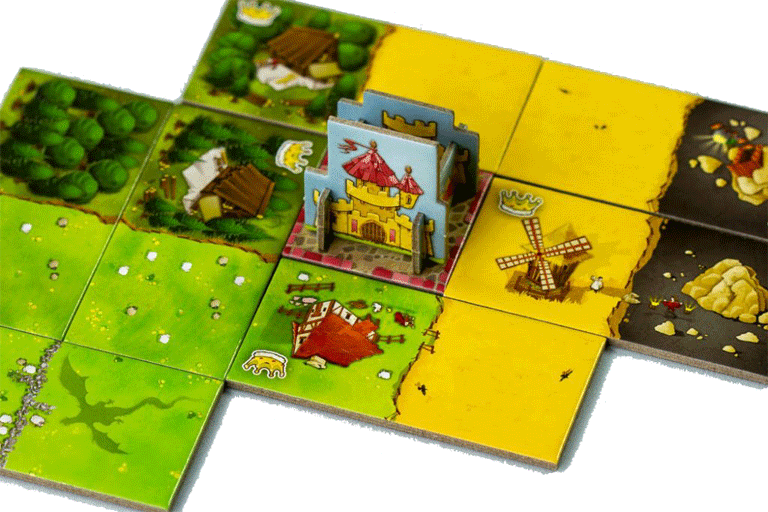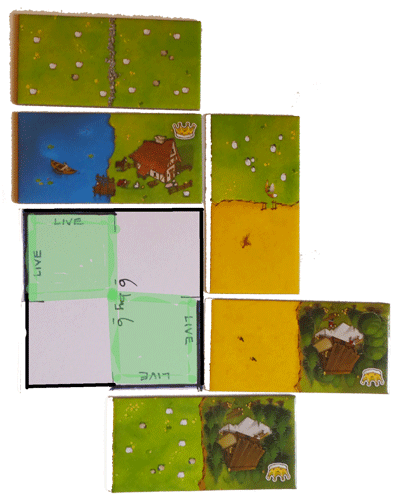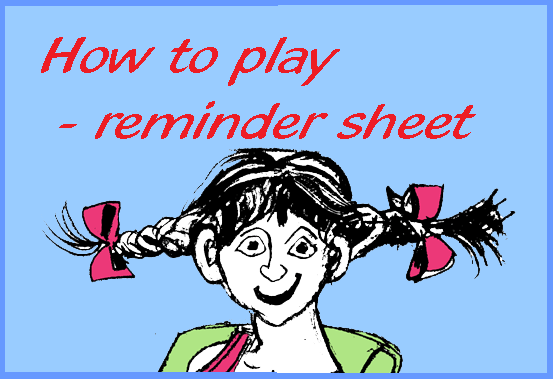
When you first look at KingDomino (out of the box or at BoardGameArena), it looks very simple, and it is, in large degree.
There’s little to it, in terms of playing pieces and layout. It’s nice and straightforward for learners, for more elderly people, and for kids.
As the name suggests, it’s about dominoes: forty eight of them.
Like real dominoes, each is made up of two squares.
In KingDomino, though, they display combinations of six types of terrain rather than numbers. The dominoes are nicely made, with colouring and artwork that’s pleasing to the eye. Most dominoes display two different terrains (like an ocean and a swamp), whilst many show two of the same type (like two forests).

Some terrains also display one, two, or even three crowns: crown territories, if you like. Terrains are counted up and added to your score if they are crowned or if they link to terrains on other dominoes that are crowned.
Getting good connections is of paramount importance.
Play is straightforward, players taking it in turns to pick up dominoes from a display of four, seeking to create their own ‘Kingdom’ (constrained to a 5 square x 5 domino-square matrix). They try to maximise the links between ‘crown territories’ to get higher scores.
However, they haven’t got an entirely free choice when it comes to making a choice.
Each turn, the first player to go lays down the uppermost domino from the four that are on display, ready to play. Having done that, they choose which domino they will play next time. They choose from four others that had been set out as next turn’s batch.
The second player does the same. That means that two of the four next-turn dominoes now have been chosen, so the third player’s choice is only between the two that are left. If there’s a fourth player, they’ll have no choice at all – they have to take what’s left.
Turn by turn, the position of players in the choosing queue changes, depending on a simple process (won’t go into it here, as this is just an overview, but it’s described in reviews).
So, pole position will change from turn to turn, and will determine in considerable degree the extent to which players can (or cannot) access the dominoes they most desire. This makes for a game that can ebb and flow. There may be early leaders, but their plans may be scuppered if others want to hold them back.
It can become a bit strategic, which is probably why it has won game awards, despite its apparent simplicity.
- can be learned quickly
- setting up is quick
- enjoyably replayable
- strategic thinking develops
- some luck is involved, in the appearance of dominoes
- player tactics matter enormously
- placement of dominoes
** *** **
One thing mentioned by reviewers is the issue of playing with three people. Some feel that it’s not too good. A resolution that I read about in a forum is easy and effective.
Make three thick cards (one for each player). Each will be a square that’s the size of two dominoes.
Divide each into four smaller squares with thick lines ~ thus making them into new, larger ‘castle’ squares.

Highlight two opposing corner segments. These become the parts of the castle area that can be linked to by dominoes of any kind, as in the standard fashion.
They provide four ‘live’ castle surfaces. The other square segments are ‘dead’, in the sense that other terrains (dominoes) cannot grow from their four dead surfaces, though any terrain type can lay aside them.
You, of course, will do it more nicely than mine.
Play with just three dominoes available to choose from at each turn, and build the terrains to a maximum matrix of six by six domino-squares.
(Rather than the usual five by five.)

